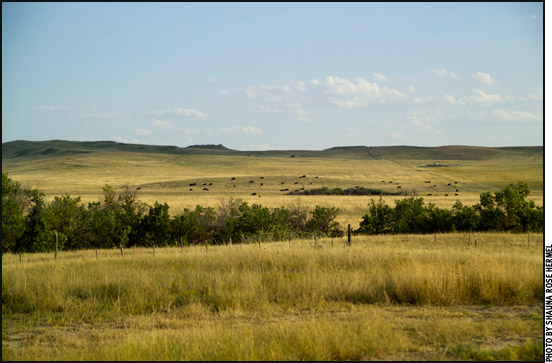HEALTH & NUTRITION...

Opportunities to Improve Cattle
Health Genetically
Animal health is synonymous with animal welfare, Mark Enns of Colorado State University (CSU) told attendees of the 43rd annual Beef Improvement Federation (BIF) symposium in Bozeman, Mont. A picture of a sick animal, to an unknowing member of the public, is automatically associated with improper treatment. What the public doesn't realize, however, is that the producer also associates animal health with animal welfare. We want to see a sick animal just as much as the average consumer, Enns said.
Enns opened Thursday's second general session, which was focused on genetics and animal health. In today's genetically focused industry, he said, it is highly beneficial for beef breeders to select for health traits. By selecting for these traits, cattlemen stand to gain as an industry from reduced costs of production, lower treatment and mortality rates, and an overall decline in poor performance associated with sick cattle. Read more.
A Plan for Johne's Control
Implementing small management changes improves animal health, increases profitability for Cass County beef farm.
Adopting simple management changes helped Cass County beef producer Gail Peterson significantly reduce the level of Johne's disease in his 250-head Angus operation. Peterson, who farms with his wife, two of his sons and his mother, credits participating in the Johne's Disease Control Demonstration Project with dispelling some common myths about the disease and determining how to decrease the disease's incidence in their herd within a relatively short period of time.
The Johne's Disease Control Demonstration Project was a near decade-long research project conducted by Michigan State University (MSU) researchers and MSU Extension specialists that evaluated Johne's disease control strategies in an effort to identify which management practices are the most effective at controlling the spread of the disease. Read more.
Integrating Genomics with Animal Health:
Genomics of Vaccine Response

Michael Gonda
While beef cattle breeders have successfully developed expected progeny difference (EPD) values for a large number of traits, genetic prediction for animal health remains undeveloped. Speaking during the Beef Improvement Federation's 43rd annual research symposium, in Bozeman, Mont., South Dakota State University geneticist Michael Gonda explained research targeting development of a DNA test that producers could use to select for healthier cattle.
Gonda has sought to measure individual animal response to vaccination against bovine viral diarrhea (BVD) by checking blood antibody levels. His study also looked at how vaccine response might differ among calves by different sires. Results suggest a link between sire and calf vaccination response — strong evidence that the response was at least partially controlled by genetics. Read more.

Rick Rasby
Ridin’ Herd
Creep-feeding beef calves
There are three possible strategies that can be used to increase calf weaning weight if weaning date is not changed: increase milk production of the dam, increase forage consumption of the calf, or provide supplemental feed to the calf. Management practices exist to increase standing forage quality, but management of forages for the calf only can be difficult. Likewise, increasing milk production of the dam increases the nutrient requirements of the dam and reduces the number of cows that can graze a fixed nutrient resource base and possibly result in a need for supplemental feed. Read more.
Arkansas Changes Trich-testing Requirements
Arkansas cattlemen warned to guard against outbreak of trichomoniasis.
All bulls sold in Arkansas for breeding must now be tested for trichomoniasis, says David Fernandez, Cooperative Extension Program livestock specialist at the University of Arkansas at Pine Bluff (UAPB).
Until this announcement June 14 by Arkansas State Veterinarian George Pat Badley, testing was only required for bulls brought into the state, says Fernandez, who advises producers who have recently purchased bulls to have them tested before turning them out with the cows. "This will help avoid significant economic losses," says Fernandez.
Trichomoniasis, commonly called "Trich" (pronounced trick), is a sexually transmitted disease caused by a microscopic parasite called a protozoan (Tritrichomonas foetus). These parasites are found in the fluids produced in the bull's sheath and in the cow's entire reproductive tract. There are no signs of the disease in infected bulls, but the disease causes early abortions in cows, says Fernandez. Read more.
Wheat Gone Bad?
Here's how to use it as alternative animal feed.
Stephen Boyles, an Ohio State University (OSU) Extension beef specialist, said that as a general rule mold-free wheat can be used to substitute up to 50% of the grain portion of finishing diets for cattle. Read more.
Cattle Diseases: Common Conditions/Terms
Click here for a list of common conditions and terms related to beef cattle diseases, such as anaplasmosis, brucellosis, BVD, E. coli, IBR and others.
[Click here to go to the top of the page.]













